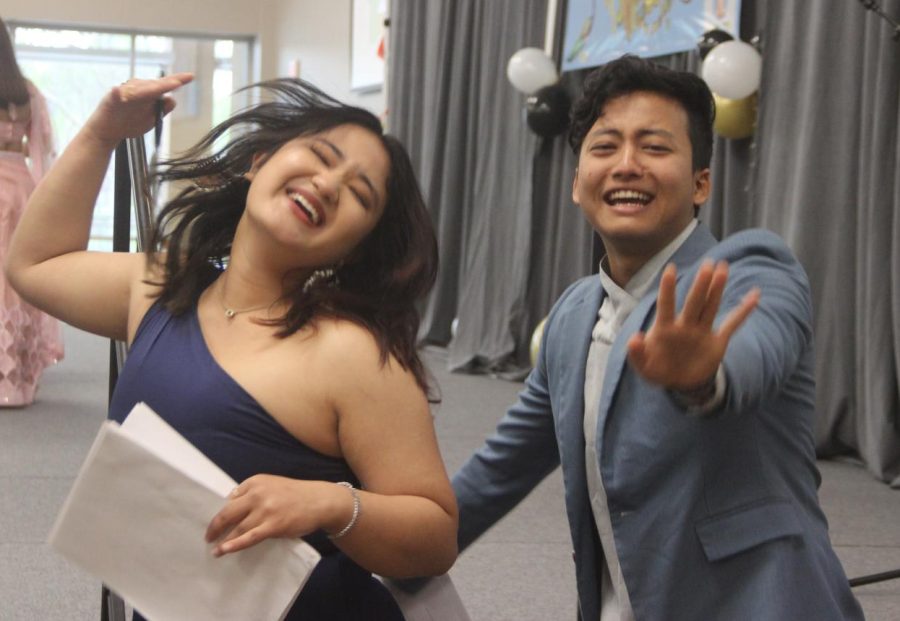Students celebrate culture, diversity at Nepali Night
March 20, 2023
ULM is a culturally diverse university with many students from Nepal, so creating an event where Nepalese culture can be displayed is important.
The Nepalese Student Association welcomed members of the community at Bayou Pointe Saturday to celebrate and honor different elements of Nepalese culture, including art and cuisine.
NSA President Prinsha Shrestha said that the event allowed Nepalese students to share their culture with ULM, but it also connected these students.
“We have come a long way from our country and events like these help us feel together,” Shrestha said.
Freshman computer science major George Khawas and sophomore computer information systems major Tamanna Sangroola hosted the event. Their lighthearted jokes and interaction with the audience added a comedic flair, making an engaging presentation.
The duo kicked off the event with a runway where Nepalese students wore their own traditional dress representing their ethnic group.
Sangroola announced that there are 36 ethnic groups in Nepal and each one has its own special dress. Eight different types of Nepalese dress were displayed on the runway. Each outfit was intricately decorated, and some had bright colors.
After the display of dress, other Nepalese students showcased songs and dances with some being original works.
The room fell silent as students took their turns singing songs from Nepal on stage. Some of the most popular songs performed were “Sathi,” “Unkai Chori Taruni” and “Gurasai Fulyo.”
Between the musical performances, NSA members would dance to different mashups of Nepalese songs. Students in the audience would scream and cheer every time a song came on that they knew.
The duos and groups that performed captivated the audience’s attention with their swift movements. Each dance had its own distinct choreography, making each performance feel completely different from the next.
One duo would dance to a gentle, slower song, and the next group would dance at a fast pace to a more rhythmic, upbeat song.
Halfway through the performances, there was a dinner break. Attendees lined up at the serving tables, waiting to eat some traditional Nepali food.
They served foods like Khasi ko Masu, goat meat cooked with Nepali herbs in a gravy of onions and tomatoes, and Aalu Gobi, cauliflower and potatoes cooked in Nepali spices.
Nepali Night gave Nepalese students the opportunity to showcase and honor their own culture, while non-Nepalese students learned more about Nepali culture.
The NSA hopes that Nepali Night inspired and encouraged “students to embrace cultural diversity and celebrate unity in diversity.”



